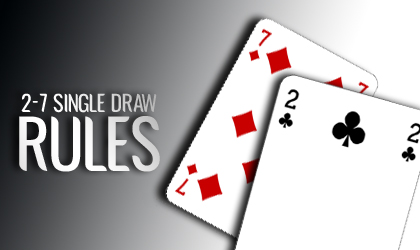In the high-stakes world of Texas Hold’em, few things are as infamous as the poker 7 2 rule. Also known as the “7-2 offsuit rule,” it refers to the idea that 7♣ and 2♦ (or any 7-2 combination of different suits) is the absolute weakest starting hand in the game. But despite its low value, this hand has carved out a significant place in poker strategy and poker culture.

What Is the Poker 7 2 Rule?
The poker 7 2 rule typically refers to a house rule or side agreement made in cash games, especially among friends or in private settings. Under this rule, if a player wins a hand using 7-2 offsuit — and shows it — the rest of the table must pay them a bonus (usually a small amount from each player). The idea is to incentivize playing the worst possible hand in poker, turning an underdog situation into an opportunity for bluffing and bravado.
Why Is 7-2 Offsuit the Worst Hand?
From a statistical standpoint, 7-2 offsuit has the least potential to improve post-flop. Here’s why:
-
Low card strength: Neither card helps you dominate in high-card showdowns.
-
No straight or flush potential: The gap between 7 and 2 means very few viable straight combinations, and being offsuit eliminates any flush possibilities.
-
Easily dominated: Most other hands have better high cards or more synergy.
In short, winning with this hand typically requires bluffing or outplaying your opponents — and that’s where the strategic fun begins.
How the Poker 7 2 Rule Changes the Game
When implemented in a friendly or home game, the poker 7 2 rule adds a new psychological layer to poker. It:
-
Encourages bluffing: Players are more willing to make bold moves with 7-2 in hopes of collecting the bonus.
-
Increases unpredictability: Knowing someone might be playing 7-2 for the reward makes all bluffs more believable.
-
Creates table dynamics: Players may start calling down more often or folding premium hands, fearing the 7-2 bluff.
In professional poker games or tournaments, the rule isn’t used, but some players still take pride in winning a pot with 7-2 — it’s considered a stylish flex or a show of skillful bluffing.
Lessons from the 7-2 Rule
Oddly enough, one of the worst hands in poker offers some of the best strategic insights:
-
Bluffing is an art: Success with 7-2 shows the importance of reading the table, timing, and confidence.
-
Position matters: Playing 7-2 from a late position can be more viable if you sense weakness in your opponents.
-
Table image counts: If you’ve built a tight image, you can get away with more — even pushing with 7-2 occasionally.
Should You Play the 7-2 Rule?
In casual games with friends, it adds excitement and a reason to try a “crazy” play now and then. But in more serious games, the 7-2 rule should serve as a reminder of how to spot weakness and turn garbage into gold — strategically, not recklessly.
Final Thoughts
The poker 7 2 rule isn’t just a quirky side rule — it’s a symbol of everything that makes poker fascinating: risk, psychology, and the thrill of making something out of nothing. Whether you’re playing in a relaxed home game or grinding through tournament hands, understanding the dynamics around 7-2 offsuit can sharpen your game and deepen your appreciation for poker’s mind games.
